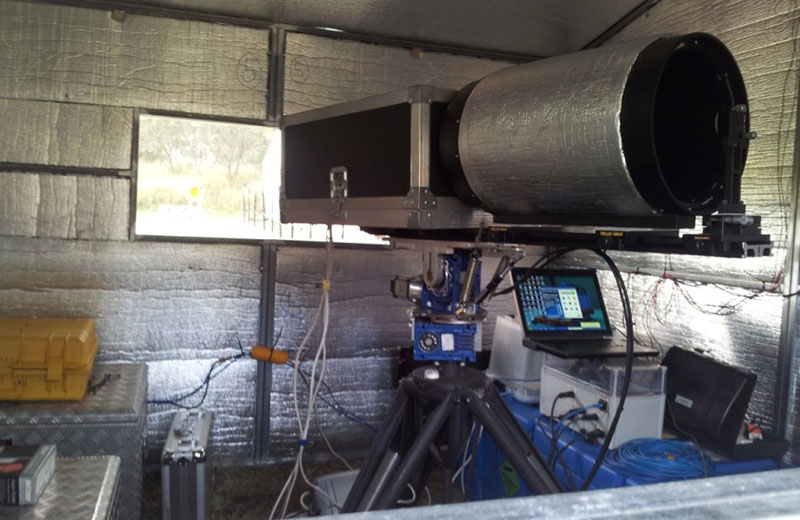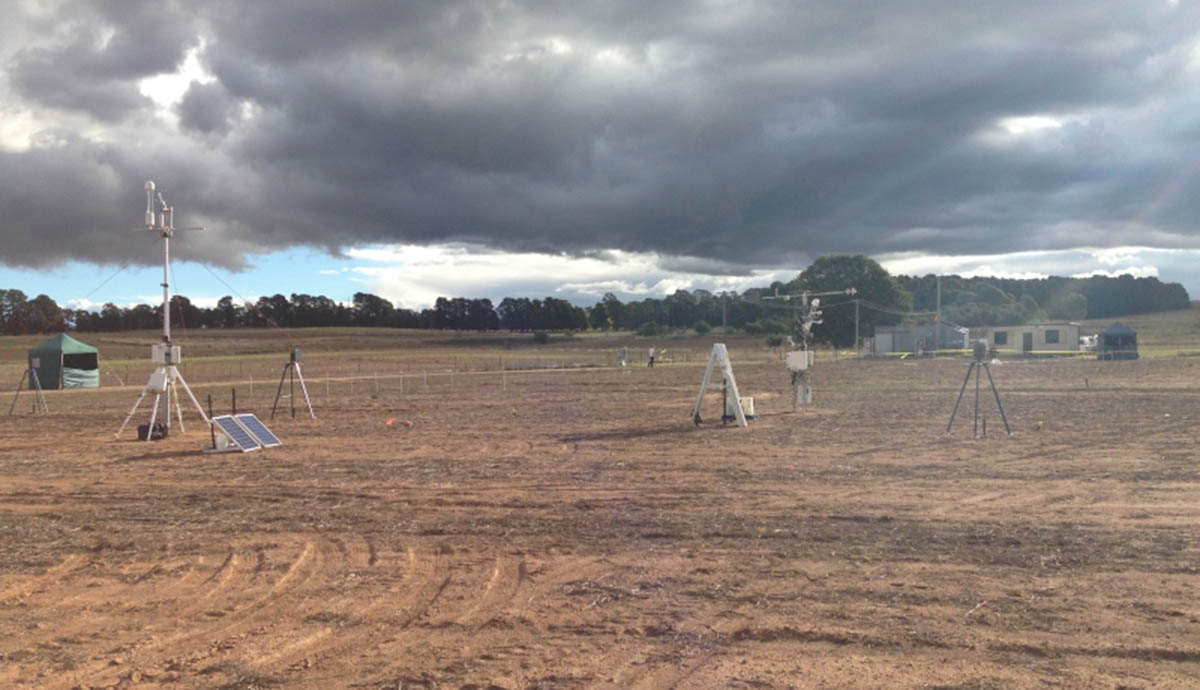March 19, 2018
Study finds best techniques for measuring greenhouse gas emissions
Collaborative experiment allows scientists to evaluate different techniques and technologies
An atmospheric monitoring experiment has shown that using a combination of techniques provides a more accurate estimate of possible greenhouse gas emissions rather than relying on a single technique.
Geoscience Australia led a large collaborative effort with 16 different research teams from Australia and Germany – including from the University of Wollongong’s Centre for Atmospheric Chemistry – working to improve the accuracy of local-scale gas emissions quantification techniques.
The study is one of the most comprehensive assessments of atmospheric techniques used to estimate emission rates ever undertaken.
Being able to measure fugitive greenhouse gas emissions is important for supporting national and global greenhouse gas reduction targets.
It is essential to have confidence in the techniques used to estimate methane emissions from the energy and agricultural sectors, natural greenhouse gas seepage, or potential carbon dioxide leakage from geological storage projects. By using a combined approach, we can generate more accurate estimates for input into Australia’s National Greenhouse Accounts.
The methane and carbon dioxide release experiment undertaken at the Ginninderra Controlled Release Facility in Canberra, Australia from April to June 2015, simultaneously compared eight different quantification techniques to determine the effectiveness of both stationary and mobile methods, and included a blind study where the actual release rate was unknown.
Project leader Dr Andrew Feitz from Geoscience Australia explained that each of the research teams used different measurement techniques and models to produce an estimate of the actual release rate without knowing the true value.
“The individual estimates varied greatly, however by bringing all of the results together we were able to produce a much closer estimate of the release rate.In the methane release experiment, not one of uncertainty ranges for the estimates from eight different techniques contained the actual release rate,” Dr Feitz said.
“By applying a combined approach, like those used in weather forecasting and climate models, we were able to greatly improve the accuracy of the estimate and provide an uncertainty range that contained the actual release rate.”

Dr Frances Phillips, a Senior Research Fellow at the Centre for Atmospheric Chemistry, led UOW’s contribution to the study. She said it was a great experience to work with such a large number of research groups.
“It is very unusual to get that much equipment in the same place and to have the opportunity to directly compare their measurements under a variety of meteorological conditions,” Dr Phillips said.
The UOW team used its Open-Path Fourier Transform Infrared (FTIR) Spectrometer, developed by the Centre for Atmospheric Chemistry to measure agricultural emissions and fire emissions, and also able to measure the concentration of multiple infrared active gases in the atmosphere including fugitive emissions from pipelines or gas and coalfields.
Dr Phillips said the Open Path FTIR Spectrometer tested very well overall.
“Measuring fugitive methane and carbon dioxide emissions from coal seam gas wells and pipelines is a very contentious area so it is important that measurements are as accurate as possible,” she said.
“How do we measure these leaks and how do we know we have the right result?
“This experiment showed the strengths and weaknesses of each of the instruments, their reliability and margins of error under different conditions, and gives us a better understanding what works best in different situations and for different tasks.”
“The Ginninderra CH4 and CO2 release experiment: An evaluation of gas detection and quantification techniques”, is published in the March issue of the International Journal of Greenhouse Gas Control.
